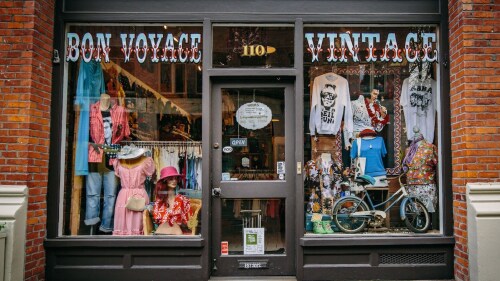Did you know that the food scientist who invented banana ketchup is a UW alum?
Philippine-born Maria Orosa was an early 20th century culinary chemist who became most well-known for her sweet and tangy creation that lines the shelves of Fou Lee Market + Uwajimaya. But she also had direct influence on Hillman City’s award-winning restaurant Archipelago and the Filipino-American community in the Seattle area.
Indulge us as we give a little taste of condiment history and this locally educated food rock star.
Life of preservation
Maria grew up during Spanish and American colonization of the Philippines in the late 1800s and carried a deep sense of national pride throughout her life. She got her master’s degrees in chemistry and pharmaceutical sciences from UW when she was 23 before working in salmon canneries and then taking those skills back to help her home country.
Some of her biggest achievements were in the fields of ingredient preservation like canning and dehydration. Her work not only addressed food insecurity in the Philippines, but also sought to elevate local agriculture and culturally important foods while eliminating waste.
If that sounds familiar, you’re right — Seattle’s devotion to local farms owes a debt to trailblazers like Maria. “Her story is what anchors our intense drive to bring a deeper cultural context to our food and communities,” says Archipelago chef Aaron Verzosa.
Playing ketchup
In addition to inventing other products and 700+ recipes, Maria developed her famed banana ketchup in the 1930s. Tomato ketchup’s Southeast Asian popularity was a carryover from American occupation. However, tomatoes were difficult to grow in a tropical environment, so Maria relied on local saba bananas and food coloring to make her replacement.
Years later, her banana ketchup would become so popular that Heinz even would make a version in tribute — and Seattle’s Filipino American community embraced the condiment as a comforting reminder of home.
Aaron regularly uses it in Archipelago’s thoughtfully upscale meals. You can also see it pop up in breakfast dishes at Edmonds’ Barkada, or on the menu at Filipino fast food chain Max’s Restaurant.
The good fight
During World War II, Maria became a Wonder Woman. Instead of evacuating the war-torn country, she hit the lab once again and created nutrient-dense rations for citizens. She was also a member of an underground guerrilla group that battled the Japanese occupation, at one point smuggling food into a prison camp.
Many Philippine citizens said they survived the war only because of Maria’s efforts — which she continued even through personal peril. After suffering injuries from shrapnel while working in her lab, Maria died in 1945 during the Battle of Manila.
Maria’s story was seldom told years after her death — but now a new generation is giving the groundbreaking woman her due, whether through food or the power of storytelling.
“Maria’s legacy in many ways is still only beginning to be unpacked by Filipinos around the globe,” said Aaron.












